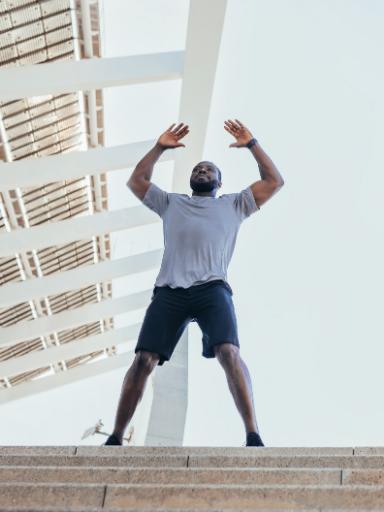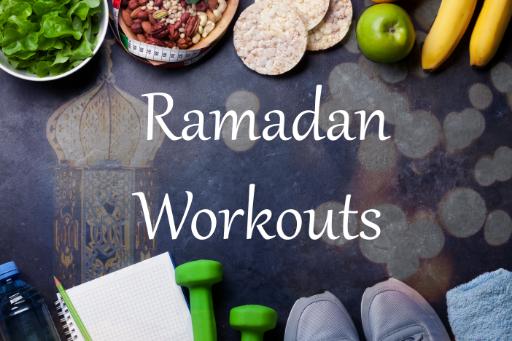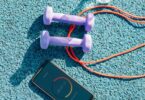Ramadan is a time of spiritual reflection, self-improvement, and heightened devotion for Muslims around the world. While fasting from dawn until sunset, many individuals question the feasibility of maintaining a workout routine. This blog aims to address common concerns and provide practical advice for those looking to stay active during this holy month.

Understanding the Impact of Fasting on Exercise
Can I workout during Ramadan? Yes, you can. However, it’s essential to understand how fasting affects your body. During fasting hours, your body relies on stored carbohydrates and fats for energy, which can lead to decreased stamina and strength. To counteract this, timing and the type of exercise are crucial.
The Best Time to Workout
How to workout during Ramadan? There are three optimal times to consider:
- After Suhoor: Just before the fast begins, the body is hydrated and energized from the pre-dawn meal. A light workout, such as a brisk walk or stretching, can be beneficial.
- Before Iftar: An hour before breaking the fast, a moderate-intensity workout can help you utilize the last of your energy reserves effectively.
- After Iftar: Post-iftar provides the most flexibility. With replenished energy levels, you can engage in more strenuous activities like weight training or cardio.

Tailoring Your Workout Routine
Low-Intensity Ramadan Workout
Low-intensity workouts are ideal during Ramadan as they align well with the body’s altered energy and hydration levels due to fasting. Here’s a deeper look into low-intensity workouts suitable for this period:
Benefits of Low-Intensity Ramadan Workout
- Minimize Dehydration: These workouts are less likely to cause excessive sweating, helping to conserve water in the body.
- Sustain Energy: They consume less energy, which is beneficial when your calorie intake is lower.
- Reduce Injury Risk: Lower intensity means less strain on the body and a reduced chance of injury.
Types of Low-Intensity Workouts
- Walking: A brisk walk, especially after Iftar, can be refreshing and help with digestion.
- Cycling: A leisurely bike ride is a great way to get some exercise without overexertion.
- Swimming: Swimming is excellent for full-body exercise and staying cool, although it might be challenging to fit into the Ramadan schedule.
- Yoga: Perfect for flexibility, balance, and stress relief. It can also be a spiritual practice that complements the Ramadan experience.
- Pilates: Focuses on core strength and can improve posture and alignment without being too taxing.
- Light Resistance Training: Using resistance bands or light weights to maintain muscle mass without the intensity of a regular workout.

Tips for Low-Intensity Workouts During Ramadan
- Timing: Consider exercising after Iftar or before Suhoor for better energy levels.
- Hydration: Drink plenty of water between Iftar and Suhoor to stay hydrated.
- Nutrition: Ensure your Suhoor and Iftar meals include proteins and complex carbs for sustained energy and muscle recovery.
- Listen to Your Body: Reduce the intensity or stop if you feel dizzy or overly fatigued.
By incorporating these low-intensity workouts into your Ramadan routine, you can maintain your fitness levels while respecting the physical demands of fasting. Remember to adjust your activity based on how you feel and the goals you wish to achieve during this holy month.
Strength Training
Strength training during Ramadan can be a great way to maintain muscle mass and strength, even while fasting. Here are some tips to help you get the most out of your strength training sessions during this holy month:
Timing Your Ramadan Workout
- After Iftar: This is the ideal time for strength training because you can eat and hydrate before your workout, providing your body with the necessary fuel and fluids.
- Before Suhoor: If you prefer to train early, you can do so before the pre-dawn meal. Just ensure you refuel adequately afterward.
Adjusting Your Routine
- Reduce Intensity: Lower the weights and increase the reps to maintain muscle endurance without overstraining.
- Increase Rest Periods: Take longer breaks between sets to allow for better recovery.
Nutrition and Hydration
- Protein Intake: Ensure you consume enough protein during Suhoor and Iftar to support muscle repair and growth.
- Stay Hydrated: Drink plenty of water between Iftar and Suhoor to prevent dehydration.
Listening to Your Body
- Monitor Fatigue: If you’re feeling overly tired or weak, it’s okay to reduce the intensity or skip a session.
- Adapt as Needed: Your body will take time to adjust to the new routine, so be patient and make changes as required.
By following these guidelines, you can effectively incorporate strength training into your Ramadan workout schedule. Remember, the key is to listen to your body and adjust your workouts and nutrition accordingly.

Cardiovascular Exercises
For cardio enthusiasts, shorter, less intense sessions will help maintain endurance levels without causing dehydration or fatigue.
Nutrition and Hydration: The Pillars of Ramadan Workout
Hydration
Hydrate well during non-fasting hours, especially after workouts. Water, along with hydrating foods like fruits and vegetables, can help maintain fluid balance.
Nutrition
Focus on nutrient-dense foods that release energy slowly. Complex carbohydrates, lean proteins, and healthy fats should be staples in your suhoor and iftar meals.
During Ramadan, it’s important to choose foods that will support your energy levels and recovery while you’re fasting and working out. Here’s a guide to help you select the best foods:
Suhoor (Pre-Dawn Meal)
- Complex Carbohydrates: Foods like brown rice, oats, and whole-grain bread provide slow-releasing energy throughout the day.
- Protein: Include eggs, cottage cheese, or Greek yogurt to help with muscle repair and fullness.
- Fruits and Vegetables: They are high in fiber, vitamins, and minerals to keep your body nourished.
- Healthy Fats: Nuts, seeds, and avocados can provide sustained energy and are essential for hormone production.
Iftar (Meal to Break the Fast)
- Hydration: Start with water or milk and include hydrating foods like soups and smoothies.
- Lean Protein: Opt for skinless chicken, fish, or legumes for muscle recovery.
- Simple Carbohydrates: Dates or fruit juices can quickly replenish energy stores.
- Vegetables: They provide essential nutrients and help with digestion.
General Tips
- Stay Hydrated: Drink plenty of fluids between Iftar and Suhoor to avoid dehydration.
- Avoid Processed Foods: Limit intake of processed and fried foods as they can lead to sluggishness and discomfort.
- Moderation: Even when breaking your fast, eat in moderation to avoid digestive issues.
By focusing on these nutritious foods, you can maintain good energy levels and support your body’s needs during Ramadan workout . Remember to listen to your body and adjust your food intake based on how you feel during your workouts and throughout the day.
During Ramadan workout , it’s important to choose snacks that will provide you with sustained energy and nutrients without making you feel too full or uncomfortable during your workouts. Here are some snack ideas that can be beneficial:
- Dates and Nuts: Dates are a traditional food to break the fast and are high in natural sugars for quick energy. Pairing them with nuts provides protein and healthy fats for sustained energy.
- Fruit Smoothies: Blend your favorite fruits with some yogurt or milk for a refreshing and energizing snack.
- Whole Grain Crackers with Hummus: A combination of complex carbs and protein that’s light on the stomach.
- Bananas: They are rich in potassium, which helps prevent muscle cramps and provides quick energy.
- Boiled Eggs: A great source of protein and can be eaten on their own or sliced over whole-grain toast.
- Yogurt with Honey and Seeds: The yogurt provides protein, the honey gives quick energy, and seeds like flaxseeds or chia seeds offer omega-3 fatty acids and fiber.
These snacks are not only nutritious but also easy to digest, ensuring that you can continue your training without any discomfort. Remember to eat them in moderation and listen to your body’s hunger and fullness cues.
Listening to Your Body
Above all, listen to your body’s signals. If you feel dizzy, lightheaded, or unusually fatigued, it’s crucial to stop exercising and rest.
Conclusion
Maintaining a Ramadan workout routine is not only possible but also beneficial for both physical and spiritual well-being. By adjusting the timing, intensity, and type of exercise, you can create a balanced regimen that complements your fasting schedule. Remember to prioritize nutrition and hydration, and always listen to your body’s needs.







